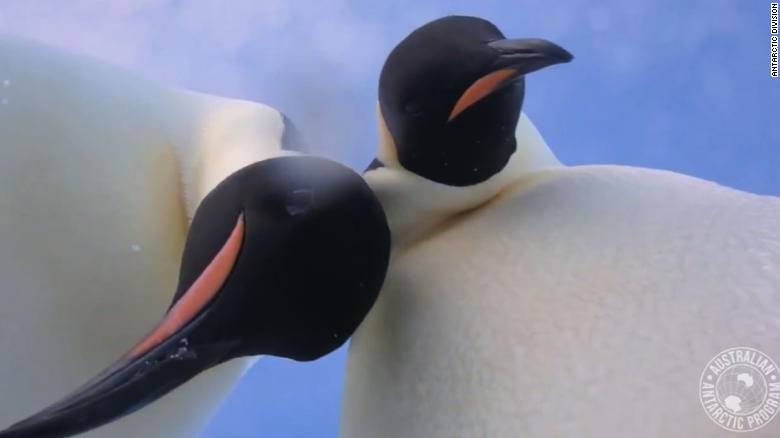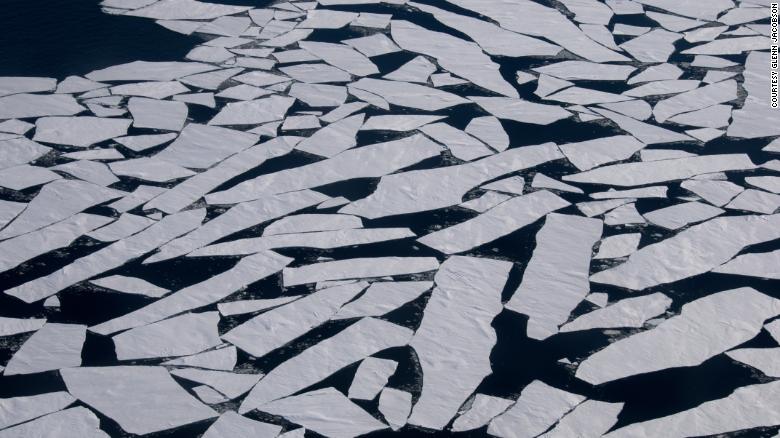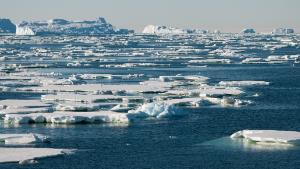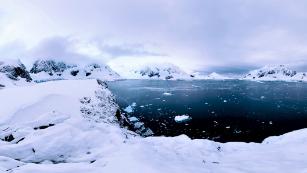Scientists lay out how to save a melting Antarctica -- and the grim future if we don't
(CNN)Sea levels will rise and all coastal countries could be seriously threatened by flooding if nothing is done to stop the massive melt of sea ice in Antarctica, according to nine award-winning scientists who have spent decades studying the icy continent and the waters around it.
They are proposing two scenarios, one bleak, one promising, for what could happen by 2070 in Wednesday's edition of the journal Nature.
Sponsor Content
The healing power of sport
As the most successful Slovenian judoka of all time, it’s impossible not to be captivated bythe hidden power of judo when speaking to Urška Žolnir.
Content provided by Judo Federation
The paper is highly speculative rather than making forecasts. These scenarios are more like data-driven conversation starters according to the authors, all who have won the Tinker-Muse Prize for Science and Policy in Antarctica game out what could happen if the world does nothing -- or if policy-makers take significant action in the next 10 years to stop the destruction.
And although you may never get to see Antarctica for yourself, these scientists want you to know that what happens in this remote region has a significant impact in your own backyard.

The penguins aren't the only ones who could be hurt by rising seas.
Why we should care about Antarctica
Yes, there are adorable penguins living there, but that's not the only reason we should care about Antarctica. It is covered by ice sheets that get channeled into the oceans through a network of ice streams and glaciers. Recently, the continent has seen a reduction in the extent of floating ice shelves. The shelves have also thinned due to our warming planet, scientists think.
Penguins, Seals, and Krill: Antarctica's fragile food chain
The Southern Ocean that surrounds the continent is vital to the health of all the rest. It soaks up more heat and carbon than any other ocean, and in doing so, it helps slow the speed with which the atmosphere is warming. The region also does the world a real service by returning nutrient-rich deep water to the surface, and it exports these nutrients to lower latitudes that rely on them to support the life in our seas.

Antarctica has seen a reduction in the extent of floating ice shelves.
Why pollution hurts this region
The continent is particularly sensitive to the effects of pollution.
The hole in the ozone, which is centered over this region, is caused in part by the release of chlorofluorocarbons that come from your air-conditionng, aerosol cans, solvents, refrigeration and other manufacturing processes. The hole allows in too much ultraviolet light, which contributes to higher temperatures. A stronger westerly wind, also due to climate change, hurts sea ice.
Increased ocean acidity, a problem seen worldwide due to the increased amount of carbon dioxide from pollution, also hurts the animals that live in the waters and can cause some reproductive issues with fish.
The dire scenario
In the first scenario laid out in the new report, if no one does anything to reduce greenhouse gas emissions and the planet continues to warm, the Southern Ocean and Antarctica could see a major melt: About a quarter of the volume of the sea ice would probably disappear by 2070.
That's on top of the record rate at which the continent is already losing sea ice. Antarctica is believed to have lost an average of 71 billion to 53 billion metric tons of ice per year between 1992 and 2011, according to a new study.
If the sea ice melts, that would mean a rise in sea levels around the globe. In the worst case, by 2070, the sea would probably rise about half a meter from where it was in 2000. US coasts would probably see even higher sea rise, which would wreak havoc and be irreversible. It would cause an estimated $1 trillion in damage in the United States alone, researchers believe.
In this scenario, the average temperature would rise about 3.5 degrees Celsius. The United Nations considers a 2 degrees increase to be "catastrophic."
Ozone-destroying emissions are on the rise and scientists don't know why
The water in the Southern Ocean could become corrosive to any animal with a shell. The warmer ocean would create more icebergs, which would have to be carefully watched to protect fishing, shipping and tourism. Fishing would get harder, since fish stocks would decline. There would be severe declines of penguins and other die-offs of seabirds and seals.
"Changing sea ice due to warming has played a role in significant breakups of ice shelves like Larsen B, which collapsed in 2002 and was in place for 11,500 years, and almost overnight, there was a change. It was both astonishing and frightening at the same time," said paper co-author Rob Massom of the Australia Department of the Environment's Australian Antarctic Division and the Antarctic Climate and Ecosystems Cooperative Research Centre. "If you remove this protective buffer for the ice shelves, this could cause huge problems."
The optimistic scenario
By 2070 -- if the world worked together and made pollution a priority, limiting greenhouse gases -- the second scenario predicts that there is a chance Antarctica could look much like it does now. The ice sheets would still be thinning, but that could slow, as would increases in ocean acidity.
Some of the more sensitive species would still see population declines, but others would adapt. The continuing decline of sea ice would still be forcing seal and seabird populations to change the way they forage for food, and these animals may still have some challenges with breeding, as we see today, but sea ice stabilization could reduce the frequency with which extreme events happen and hurt these species.
Technology developed to redesign Antarctica's bases in the wake of these changes could be used to improve building and waste management in other parts of the world.
Worldwide impacts
The interdisciplinary team of researchers behind the theoretical glimpse into two possible futures hopes it will motivate policy-makers to make melting sea ice a priority.
"One good thing about showing these possibilities is that it shows the horse isn't out of the barn yet, and we can still do a lot for the melting ice, but as it stands, the Paris Climate agreement, even if every nation follows through on what they promise, we still have to do better than that," said co-author Rob DeConto, a professor of geosciences at the University of Massachusetts Amherst.
"It's an interesting paper," said Andy Mahoney, who was not involved in the work but is a sea ice expert and an assistant research professor in geophysics at the University of Alaska Fairbanks. "While it is highly speculative, the scenarios they have chosen are not out of the bounds of reason, and I do hope it promote discussion.
"We need people to realize this is not something that only impacts a remote region. Fisheries that provide a lot of jobs and food for the masses will be impacted. Coastal regions will feel this. It has far-reaching consequences across the planet."
Follow CNN Health on Facebook and Twitter
See the latest news and share your comments with CNN Health on Facebook and Twitter.
DeConto is still optimistic about the future.
"I am by nature optimistic, but it may take some increasing hardships around the coastal regions before people put it together that, say, the nuisance flooding we see in Boston and in Miami and in other regions that is getting a little bit worse is an indication that something is going on really far away that is impacting us," he said.
"Now, we have firm attribution about what, at least in large part, is causing these changes. Hopefully, when people see that, they may pay attention, and we want that to happen sooner rather than later, before it is too late."
News Courtesy: www.cnn.com













